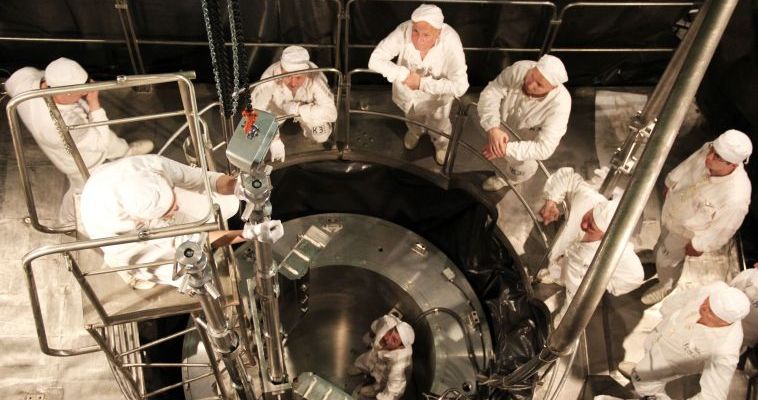 Scheduled repairs will begin at Russia’s floating NPP (FNPP), Akademik Lomonosov, moored in Pevek in Chukotka, Russia’s northernmost city. This will include replacement of fuel in two reactors, with the work scheduled to be completed in early 2024. Fuel was loaded into the reactors for the first time in October 2018 at the Atomflot site in Murmansk, a few months before the FNPP was sent to Chukotka. It now provides both electricity and heat to Pevek and the surrounding region.
Scheduled repairs will begin at Russia’s floating NPP (FNPP), Akademik Lomonosov, moored in Pevek in Chukotka, Russia’s northernmost city. This will include replacement of fuel in two reactors, with the work scheduled to be completed in early 2024. Fuel was loaded into the reactors for the first time in October 2018 at the Atomflot site in Murmansk, a few months before the FNPP was sent to Chukotka. It now provides both electricity and heat to Pevek and the surrounding region.
The Akademik Lomonosov FNPP, developed and constructed by Rosatom, was connected to the grid in December 2019, and at the end of May 2020 began commercial operation. The keel was laid in 2007 at Sevmash in Severodvinsk, but in August 2008 Rosatom transferred the contract to the Baltic Shipyard in St Petersburg, where the 21,500 tonne hull was launched at the end of June 2010. After the two reactors were installed in October 2013, Academik Lomonosov in April 2018 began its journey to Murmansk where it was loaded with fuel and took on board its crew.
In June 2019, regulator Rostekhnadzor issued a 10-year licence to Rosenergoatom to operate the Akademik Lomonosov until 2029. A dedicated system of coastal infrastructure supports the FNPP, which is equipped with two KLT-40S reactors with an electric power of 35MW each. The power capacity of the FNPP is 70MW, the heat capacity is 50 Gcal/h. The Akademik Lomonosov is the lead project of a series of mobile transportable low power units to be sited in the Far North and the Far East to provide energy to remote industrial enterprises, port cities and gas and oil platforms. Rosatom has since announced plans to update its FNPP project using the larger RITM-200
Nuclear fuel for the reload the will be delivered by sea or plane. Then it will be loaded into the reactors. “The process is absolutely safe,” Rosenergoatom said. “Shutdown of the station is not required, since the output takes place on a staggered basis from the two reactors. The fuel loading will take place on each reactor, while maintaining output. Used fuel will be placed in special storage facilities on board the power unit, where it will completely isolated and safe.”
Scheduling and preparatory repairs at the station start in June. One of the main stages of the work will be the refuelling. The reactors use enriched uranium is used, which must be changed every 3-4 years. It is planned that repairs will be completed in early 2024.
Image courtesy of Rosatom



